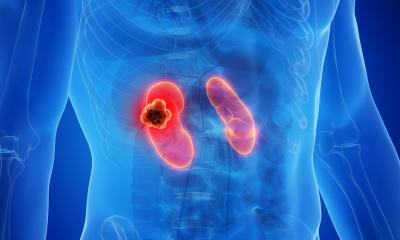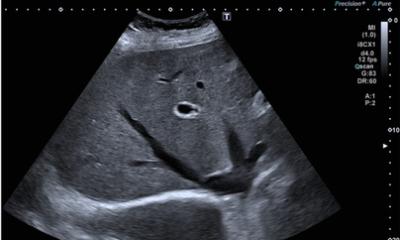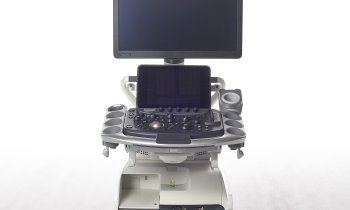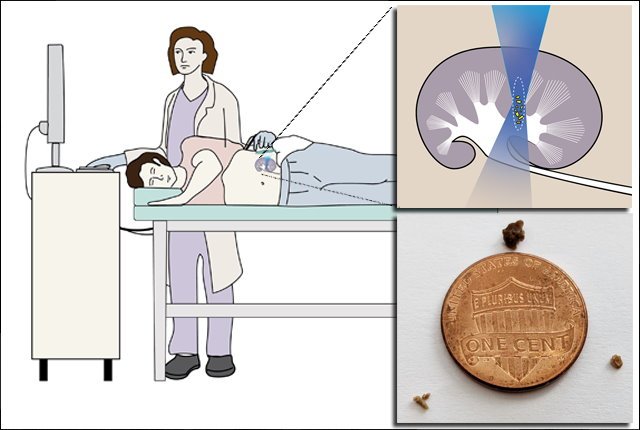
Image source: Brian Rasmussen/University of Washington Applied Physics Laboratory
News • Burst wave lithotripsy
Pushing kidney stones with ultrasound
As many as 50% of patients who have kidney stones removed surgically still have small fragments remaining in the kidneys afterward. Of those patients, about 25% find themselves returning for another operation within five years to remove the now-larger fragments.
Researchers at the University of Washington School of Medicine found, however, that patients who underwent a stone-moving procedure, in which doctors used a handheld ultrasound device to nudge patients’ kidney-stone fragments, had a 70% lower risk of such a recurrence. The Journal of Urology published the findings in August. “I think the main takeaways of this study are removing fragments reduces relapse and using a noninvasive, hand-held ultrasound device to help clear these kidney stone fragments,” said UW Medicine urologist Dr. Jonathan Harper, the study’s senior author.
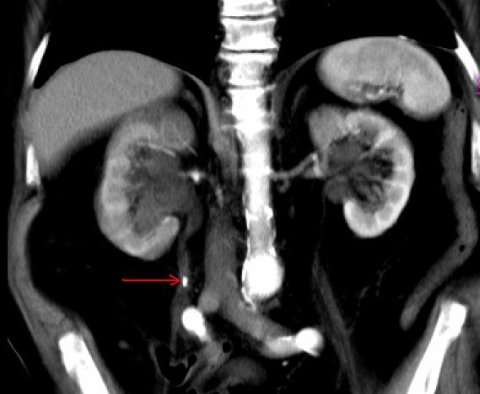
Image source: MBq at German Wikipedia, MBq Harnleiterstein, marked as public domain, more details on Wikimedia Commons
The multisite, randomized and controlled trial was conducted from May 2015 to April 2024. Almost all of the 82 participants were from the UW Medicine or the Veterans Affairs (VA) Puget Sound health systems. All had stone fragments that had persisted in their kidneys for months, and their ureters were free of stones and fragments.
In the study, 40 underwent ultrasound treatment to encourage fragments to clear from the kidneys, while 42 control-group members received no such treatment. With patients awake in a clinic office setting, doctors used a wand that generated ultrasonic pulses through the skin to move the fragments closer to the ureter, where they could be naturally expelled, sometimes with the next urination, Harper noted.
Harper and his co-lead author on the paper, urologist Dr. Mathew Sorensen, have worked on this technology and treatment for 15 years. They also use this technology, called burst wave lithotripsy, to blast larger stones into smaller pieces; those successes were published in 2022.
If you have a couple of small stones which could cause future problems, you make an office appointment and in 30 minutes you’re done. This could really revolutionize kidney stone treatment
Jonathan Harper
The pushing and breaking technologies are used with the same ultrasound platform. Harper expressed hope that both clinical uses of the technology would become commonplace. A company, SonoMotion, is commercializing the technology, which was developed at the University of Washington, he added. “I see a lot of potential in this It could become as common as getting your teeth cleaned. If you have a couple of small stones which could cause future problems, you make an office appointment and in 30 minutes you’re done. This could really revolutionize kidney stone treatment,” Harper said.
This study was supported by a grant (P01 DK043881) from the National Institute of Diabetes and Digestive and Kidney Diseases, part of the U.S. National Institutes of Health, and by resources from the Veterans Affairs Puget Sound Health Care System.
Source: University of Washington School of Medicine
23.09.2024




